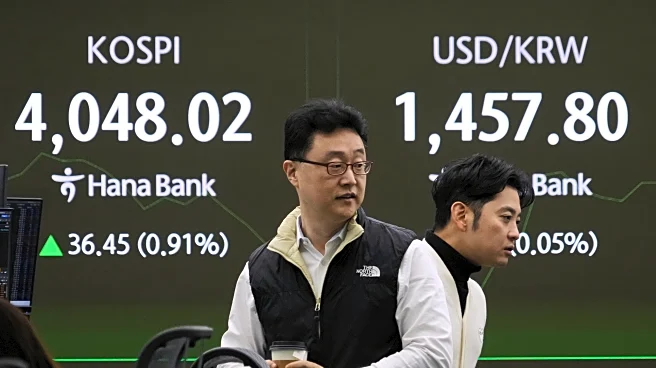What's Happening?
The Trump administration has been criticized for its handling of research funding, with experts suggesting that China may be outpacing the U.S. in research and development spending. Alessandra Zimmermann,
a researcher from the American Association for the Advancement of Science, highlighted that U.S. federal R&D investments have remained flat for the past two decades when adjusted for inflation. Under President Trump, there have been significant cuts to research grants and funding for major universities, disrupting the flow of federal dollars to institutions. This comes as China continues to increase its national investment in R&D, potentially surpassing the U.S. in total spending. The situation is compounded by the recent government shutdown, which has delayed funding decisions and impacted federal research agencies like the National Institutes of Health and the National Science Foundation.
Why It's Important?
The potential shift in global research funding dominance from the U.S. to China could have significant implications for American scientific innovation and competitiveness. If China surpasses the U.S. in R&D spending, it may attract more researchers and talent, potentially leading to a brain drain from the U.S. This could affect the country's ability to lead in scientific discoveries and technological advancements. The Trump administration's cuts to research funding may hinder the U.S.'s ability to maintain its position as a global leader in innovation. Additionally, the uncertainty surrounding federal funding due to the government shutdown could further exacerbate the situation, impacting the ability of research agencies to operate effectively.
What's Next?
The U.S. government faces a critical decision on how to address the funding challenges posed by the Trump administration's budget cuts. Congress must decide on appropriations bills by January 30 to ensure stable funding for federal research agencies. The outcome of these decisions will determine the future of U.S. research funding and its ability to compete with China's growing investment in R&D. The scientific community and universities are closely monitoring these developments, advocating for increased funding to support research initiatives and prevent further disruptions.












